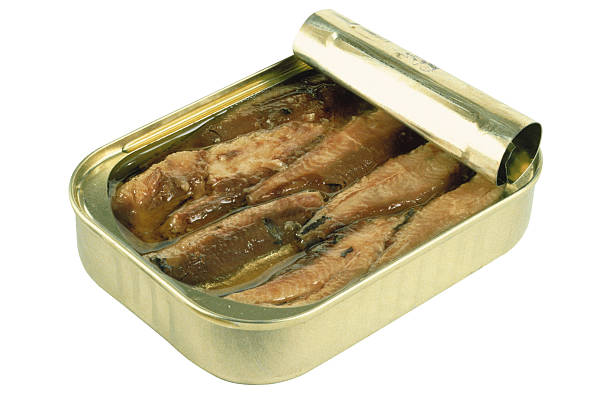Introduction – Current State of Play: The Canned Fish Sector in Philippines
You may have noticed that the canned fish market in the Philippines is buzzing with activity—and for good reason. As of August 2025, a mix of new trade policies, environmental challenges, and supply chain developments is dramatically reshaping how businesses source, sell, and consume canned fish in the country.
In February, the Department of Agriculture greenlit the importation of up to 25,000 metric tons of fish and seafood to stabilize prices and diversify the supply. While this is a win for foodservice industries, there’s increasing tension around the Supreme Court’s recent decision allowing commercial fishing in municipal waters. This move could jeopardize sustainability certifications that exporters rely on, shaking up international trade confidence.
Then there’s the oil spill disaster from mid-2024 that affected over 28,000 fisherfolk and thousands of boats, triggering a no-catch zone in several regions. Add in the rising cost of operations and an underutilized cold chain infrastructure, and you’ve got a market teetering between opportunity and risk.
In such a volatile environment, businesses must stay sharp and agile. Staying ahead of these changes isn’t just about survival—it’s about strategic advantage. Platforms like Freshdi help buyers navigate this uncertainty by offering verified supplier insights, RFQ trends, and timely market intelligence.
Deep Dive – What’s Making Headlines? Key Recent News & Impacts
1. Urbanization Drives Convenience Food Demand
Life in the Philippines is getting faster. Busier lifestyles are pushing consumers toward ready-to-eat meals, and canned fish is a top choice. Sardines and tuna—affordable, tasty, and shelf-stable—are now kitchen staples for millions of Filipino families.
2. The Health Angle: Omega-3s for the Win
Consumers today are more health-conscious than ever. As awareness of omega-3 health benefits grows, canned fish is gaining popularity not just as a meal option but as a wellness choice. It’s a win-win: nutritious and convenient.
3. Fish Catch Volumes Are Up—But So Are Prices
Despite a 54.10% increase in fish catch volumes in Q2 2024, prices for key species like galunggong (round scad) are still climbing. Why? Operational costs, increased demand, and post-spill cleanup efforts are squeezing margins.
4. Century Pacific’s Big Bet
Century Pacific Food Inc. recently locked in a massive $40 million deal to supply Vita Coco with coconut water. While not directly related to fish, this shows investor confidence in the Philippines’ food manufacturing sector. It also means more jobs and infrastructure—good news for the broader food export ecosystem.
5. Sardine Prices Hold Steady (For Now)
Despite inflationary pressures, sardine canners have agreed to keep prices stable. This helps maintain consumer trust but may strain margins for producers unless operational efficiencies kick in.
6. Market Projections Look Bright
The canned food segment in the Philippines is expected to grow at a CAGR of 5.42% through 2032. With evolving consumer habits and increased retail penetration, the future looks promising—if businesses can navigate the present.
Top 7 Verified Canned Fish Suppliers in Philippines – Navigating Current Market Realities
Based on supplier verification, export capabilities, and real-time user feedback on Freshdi, here are the top 7 canned fish suppliers to watch in August 2025:
1. Wawa
Wawa is known for its robust export profile and reliable product quality. Their canned sardines and mackerel are in high demand across Southeast Asia and the Middle East.
2. Alliance Select Foods Int’l Inc.
A major player in the tuna export market, Alliance Select is BRC-certified and has facilities in both the Philippines and Indonesia. They’re a top choice for buyers needing scale and compliance.
3. Jean Leonardo
Specializing in regional fish varieties, Jean Leonardo focuses on small-batch, high-quality canned products. Ideal for niche markets and gourmet retailers.
4. Seatrustseafood Opc
Known for sustainable sourcing practices and HACCP certifications, this supplier is a favorite among buyers prioritizing eco-friendly credentials.
5. Foodsphere, Inc.
Makers of the popular “Century Tuna” brand, Foodsphere is synonymous with quality. Their broad distribution network makes them a strong partner for both local and export markets.
6. Sameed Consumer Goods Wholesaling
A rising star in private label manufacturing, Sameed supports custom branding and bulk orders—perfect for retailers and importers looking to differentiate.
7. Tuna Dealer
As the name suggests, Tuna Dealer focuses on tuna products for both foodservice and retail. Their flexible MOQs and responsive fulfillment make them attractive to mid-size buyers.
Dynamic Ranking Note: Supplier rankings on platforms like Freshdi are dynamic and can shift based on factors like RFQ responsiveness, seasonal availability, and customer satisfaction. Keep an eye out for “Suppliers of the Month” or “Top Movers” to identify who’s thriving in the current market.
Market Navigation – Strategic Responses to The Prevailing Canned Fish Landscape in Philippines
Opportunities
- High Catch Volumes: The recent surge in fish catch presents a great sourcing opportunity—if you act quickly before prices adjust.
- Trade Flexibility: The new import guidelines make it easier for businesses to diversify their supply sources or fill gaps during local shortages.
- Growing Retail Demand: With the rise in convenience food consumption, retailers and distributors can expand their canned fish offerings to capture new customers.
Risks
- Environmental Disruptions: Oil spills and no-catch zones can trigger sudden shortages and compliance issues.
- Policy Uncertainty: The Supreme Court’s ruling on municipal fishing waters could jeopardize sustainability certifications, impacting export eligibility.
- Price Volatility: Even with high supply, operational costs could continue to drive prices up unpredictably.
Strategic Adjustments
- Reevaluate Risk Assessments: Don’t rely solely on traditional fishing zones—diversify sourcing locations and suppliers.
- Focus on Certified Suppliers: With sustainability under the spotlight, choose partners with third-party certifications to safeguard your export channels.
- Use Freshdi for Realtime Alerts: Platforms like Freshdi provide trigger-based updates on RFQ shifts, allowing you to pivot quickly when market conditions change.
Conclusion – Key Takeaways for Businesses in a Dynamic Market
Let’s be honest—navigating the Philippine canned fish market in 2025 isn’t for the faint of heart. From oil spills to legal rulings, this landscape is shifting faster than ever. But within this chaos lies opportunity.
If you’re sourcing sardines, tuna, or mackerel, here’s what you need to remember:
- Policy changes are opening the door to more imports and competitive pricing.
- Consumer demand is growing—but so are expectations around health and sustainability.
- Verified suppliers listed on Freshdi can help you stay ahead of the curve with reliable product quality and market-aligned capabilities.
So now’s the time to get smart, stay informed, and use every tool at your disposal to make proactive, strategic sourcing decisions.
Buyer’s Checklist: Canned Fish Sourcing in the Philippines – August 2025
✅ Choose suppliers with sustainability certifications
✅ Monitor RFQ trends weekly via Freshdi
✅ Prioritize suppliers near unaffected fishing zones
✅ Factor in potential delays from no-catch zones and weather events
✅ Request latest quality assurance reports before confirming large orders
Future Outlook: What’s Next for Canned Fish in the Philippines?
The market will likely continue its upward trend, buoyed by growing domestic demand and international interest. However, buyers should remain vigilant. Environmental, legal, and policy developments can quickly change the game.
Platforms like Freshdi will play a crucial role in this future—offering predictive sourcing insights, real-time supplier ratings, and market intelligence that allows businesses to navigate uncertainty with confidence.
FAQs
1. What’s causing the price fluctuations in canned fish despite higher supply?
Operational costs, increased demand, and environmental disruptions like oil spills are keeping prices volatile—even with higher catch volumes.
2. How can I verify if a supplier is reliable and compliant with export standards?
Use sourcing platforms like Freshdi to check supplier certifications, user reviews, and recent activity.
3. Will the Supreme Court ruling on municipal fishing affect exports?
Yes, it could. The ruling may compromise sustainability certifications, which are essential for many international buyers.
4. What types of canned fish are most in demand in 2025?
Sardines and tuna remain the most popular, driven by their affordability, nutrition, and versatility.
5. How can I stay updated on sudden supply chain changes?
Sign up for alerts and RFQ updates on Freshdi to get real-time intelligence tailored to the canned fish market.


